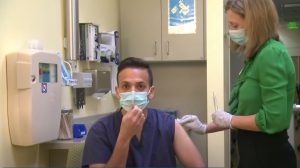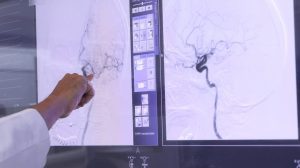NEW YORK (Reuters Health) – For repairing simple lacerations, tissue adhesives produce similar cosmetic results as sutures, staples or adhesive tapes. They’re also quicker and less painful.
That’s according to Cochrane review of 11 relevant randomized controlled studies involving more than 900 children and adults with acute, linear lacerations. The trials compared one tissue adhesive against another or a tissue adhesive with standard wound closure (sutures, staples, or adhesive tapes) for traumatic lacerations.
The findings are summarized in a “Systematic Review Snapshot” published online May 30 in Annals of Emergency Medicine.
Tissue adhesives are widely available, Cochrane review author Dr. Ken Farion of the University of Ottawa, Children’s Hospital of Eastern Ontario, in Canada, noted in an e-mail to Reuters Health. They are used in “multiple circumstances outside of the acute laceration domain – post-op closure, skin grafts, dental repair, and ophthalmologic surgery, etc.”
The Cochrane review found no difference in cosmetic results in simple lacerations closed with tissue adhesive or standard wound closure. Moreover, pain scores were lower with tissue adhesives (weighted mean difference on the parent visual analogue scale – 13.4), as was procedure time (weighted mean difference – 4.7 minutes).
Case reports have described foreign body reaction and scar tattooing with tissue adhesives. However, in the Cochrane review, the only complication statistically associated with tissue adhesives was wound dehiscence, with an estimated number needed to harm of 40.
Potential “downsides,” of tissue adhesives, Dr. Farion commented, “relate to choosing the wrong wound to glue – the wound is under too much tension and will break open, the wound is infected and you’re now sealing it in, etc.”
“In theory, you also don’t want to get the glue wet in the first 24 to 48 hours as it may be more easily disrupted. Sutures and staples can be washed right away,” he added.
In terms of costs, research has suggested that tissue adhesives “incur higher institutional cost while generating a lower total patient charge,” the authors note. “These costs may be offset, however, by increased patient satisfaction, ED throughput, and a reduced need for procedural sedation in children.”
“There are several cost benefit analyses, but in general the glue product costs more than standard wound closure, but the time and potential requirement for a second visit for removal makes glue less costly than standard wound closure from multiple perspectives,” Dr. Farion added.
“Emergency physicians should incorporate the use of tissue adhesives for simple laceration repairs,” Dr. Lee Wilbur and Dr. Rawle Seupaul of the Department of Emergency Medicine, Indiana University School of Medicine in Indianapolis conclude in a commentary.
Ann Emerg Med 2011.




